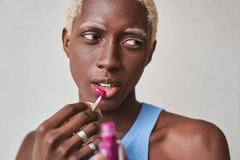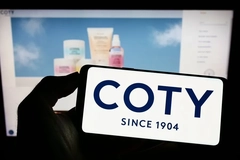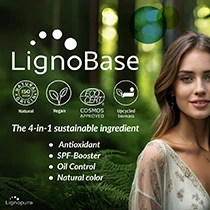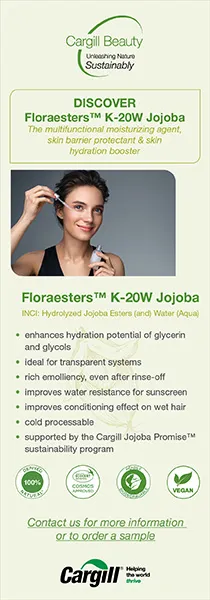Forever chemicals screened in menstruation products, traces detected in wrappers and some tampons

15 Aug 2023 --- Researchers working with the American Chemicals Society (ACS) have analyzed over 100 period products for fluorinated compounds, an indicator of potentially harmful per- and polyfluoroalkyl substances, or PFAS. Their results show that while PFAS are absent from many menstruation products, fluorine was identified in wrappers for numerous pads and some tampons.
They warn that the compounds – which remain in the body for many years when absorbed into the body – might be accidentally or intentionally added to some types of menstruation products by manufacturers.
Period products come in a variety of styles – liners, pads, tampons, cups and underwear – to help people feel comfortable during a menstrual bleed. “But their labels don’t usually list the ingredients, so consumers don’t know what’s in their product of choice,” state the scientists.
“Of course, you’re concerned for the wearer, but we’re also concerned about the ecological impact because PFAS are ‘forever chemicals,’” says Graham Peaslee, Ph.D., the principal investigator of the project.
“Once these products are thrown away, they go to landfills and decay, releasing PFAS into groundwater. And we, or later generations, could end up inadvertently ingesting them.”
Bioaccumulative toxins
PFAS are a category of over 12,000 compounds that have stick-, stain- and water-resistant properties, which are desirable characteristics for some products. But because these compounds don’t break down easily in the environment or our bodies, they are persistent and bioaccumulative — hence the “forever chemical” moniker.
 Currently, there are few regulatory limits on including PFAS on period products in the US and Europe.
Currently, there are few regulatory limits on including PFAS on period products in the US and Europe.
While it’s not known how much PFAS could pass from different materials through the skin, the research team links exposure to these compounds with a potentially higher risk of negative health outcomes, including some cancers and immune suppression.
Currently, there are few regulatory limits on including PFAS on period products in the US and Europe.
When it comes to such personal products, people are concerned about what goes into them, says Dr. Peaslee, which is why his research team at the University of Notre Dame started testing them for PFAS.
PFAS in tampons and pads
Alyssa Wicks, a graduate student in Peaslee’s lab, wanted to expand the analyses to a larger variety of period products outside period underwear that haven’t been widely tested, such as the packaging for single-use tampons and pads, as well as reusable options, such as menstrual cups.
“Our first step was a screening that’s done quickly and simply,” says Wicks. “We determined if these products had organic fluorine as a surrogate for PFAS.”
The research team cut out a small portion of each item and analyzed it in less than three minutes, using particle-induced gamma-ray emission spectroscopy.
Some pads and period underwear had multiple layers, which were sampled separately. For instance, some of the tested underwear products had as many as ten layers, though the average was closer to four.
Fluorine signals PFAS presence
The researchers measured total fluorine in the single-use product’s wrappers. So far, Wicks has analyzed 123 period products sold in the US, 30 of which were different underwear, with this technique. She also plans to analyze similar products sold in Europe.
The results of these analyses suggest that some period products potentially include PFAS, but not all of them. “In general, tampons didn’t seem to contain fluorine,” says Wicks. “Same with menstrual cups and the layers of pads that come in contact with a person’s skin.”
Most surprising to the researchers was the presence of total fluorine in the wrappers for numerous pads and some tampons, as well as the outer layers of some of the period underwear. Some of the highest amounts measured were 1,000 to several thousand parts per million total fluorine.
Because of those high concentrations, Wicks hypothesizes that PFAS might be used to keep moisture out of the wrappers so that the items inside remain dry. In addition, she suggests that adding these compounds to the outer layer of the period underwear would keep blood from escaping the inner layers and stop it from spreading onto a person’s clothing.
Scrutinizing a wider array of products
This initial work has allowed the researchers to hone in on which period products likely have PFAS in them. Next, the team will analyze the samples that contained measurable amounts of fluorine specifically for 40 individual PFAS compounds.
In the meantime, the team notes it is interesting that some products tested in the study were actually free of fluorine.
“It’s clear that PFAS are not essential,” concludes Peaslee. “Feminine products are essential, but the need for a fluorinated wrapper, or the need for a fluorinated layer, doesn’t seem to be, because plenty of them are made without relying on these compounds.”
The researchers presented their results on Sunday, August 13, on the first day of the fall meeting of the ACS. The event is a hybrid meeting being held virtually, until August 17, featuring 12,000 presentations on a wide range of science topics.
Cracking down on forever chemicals
In light of growing awareness about high levels of micropollutants in the environment, Intrapore joined chemicals supplier Evonik to expand the reach of its remediation technologies, which are designed to remove traces of PFAS in soil and groundwater systems – where they can linger for decades.
 The researchers aim was to expand the scope of research on PFAS in menstruation products, looking at a broader array of items.Previous research showed that PFAS used in cosmetics may penetrate the human skin barrier and accumulate in the body, increasing cancer-risk. A study from last October warned that certain levels of 13C4-Perfluorooctanoic acid – a kind of PFAS – can be absorbed internally via the skin when mixed into a sunscreen.
The researchers aim was to expand the scope of research on PFAS in menstruation products, looking at a broader array of items.Previous research showed that PFAS used in cosmetics may penetrate the human skin barrier and accumulate in the body, increasing cancer-risk. A study from last October warned that certain levels of 13C4-Perfluorooctanoic acid – a kind of PFAS – can be absorbed internally via the skin when mixed into a sunscreen.
On the other hand, the UK-based Cosmetic Toiletry & Perfumery Association argued that PFAS used in makeup does not make products unsafe as they undergo strict regulation to meet legal safety requirements. Just because PFAS are environmental polluters, it does not mean that the chemicals used in cosmetics are equally harmful.
In spite of a wavering consensus among specialists who have weighed in on the matter, the EU plans to restrict 10,000 PFAS in a proposal drafted by five countries.
“Without ambitious rules for clean air and water, the industry will not change direction in any nature-beneficial or health-positive way,” Susie Hewson, founder at Natracare, previously told Personal Care Insights.
In the US, the state of California banned the sale of intentionally added PFAS to cosmetics last October.
Recently, Thinx settled a class action lawsuit after allegations were made that its period underwear products contain potentially harmful PFAS chemicals, despite the items being advertised as sustainable, organic and reusable.
By Benjamin Ferrer












